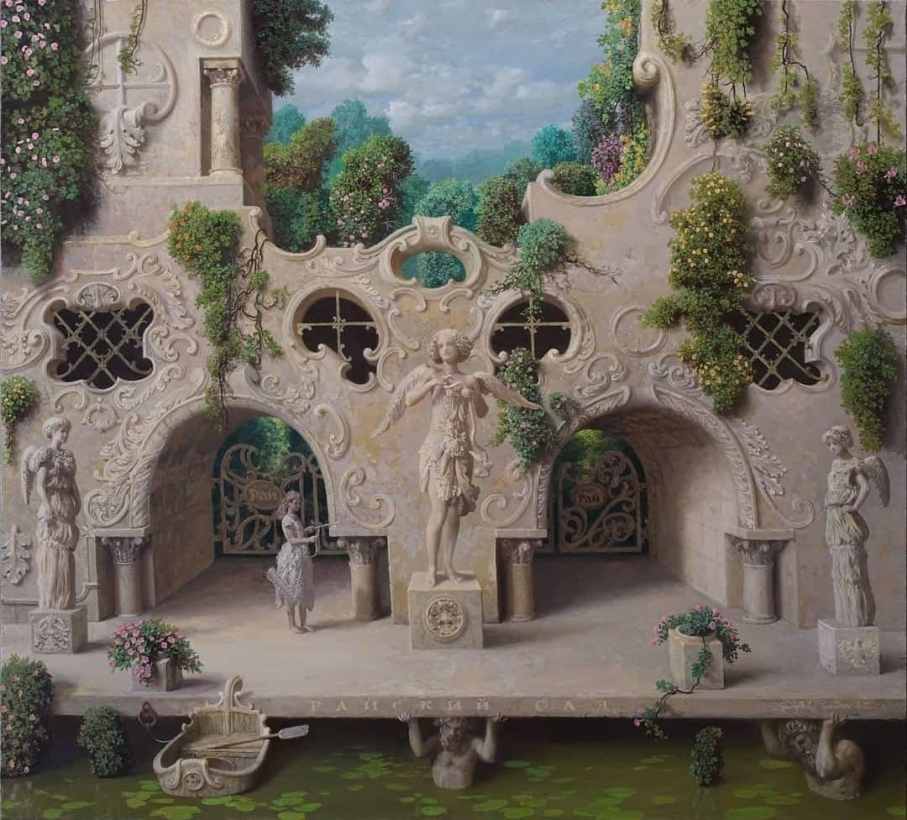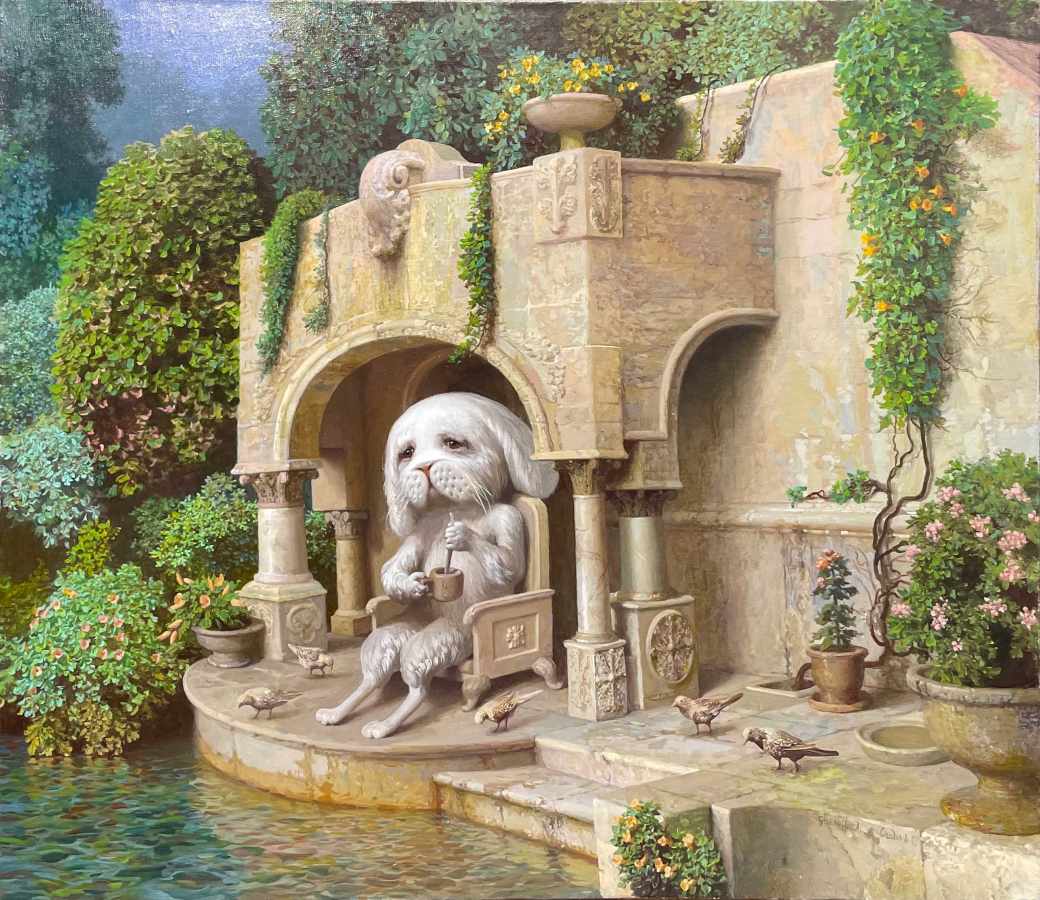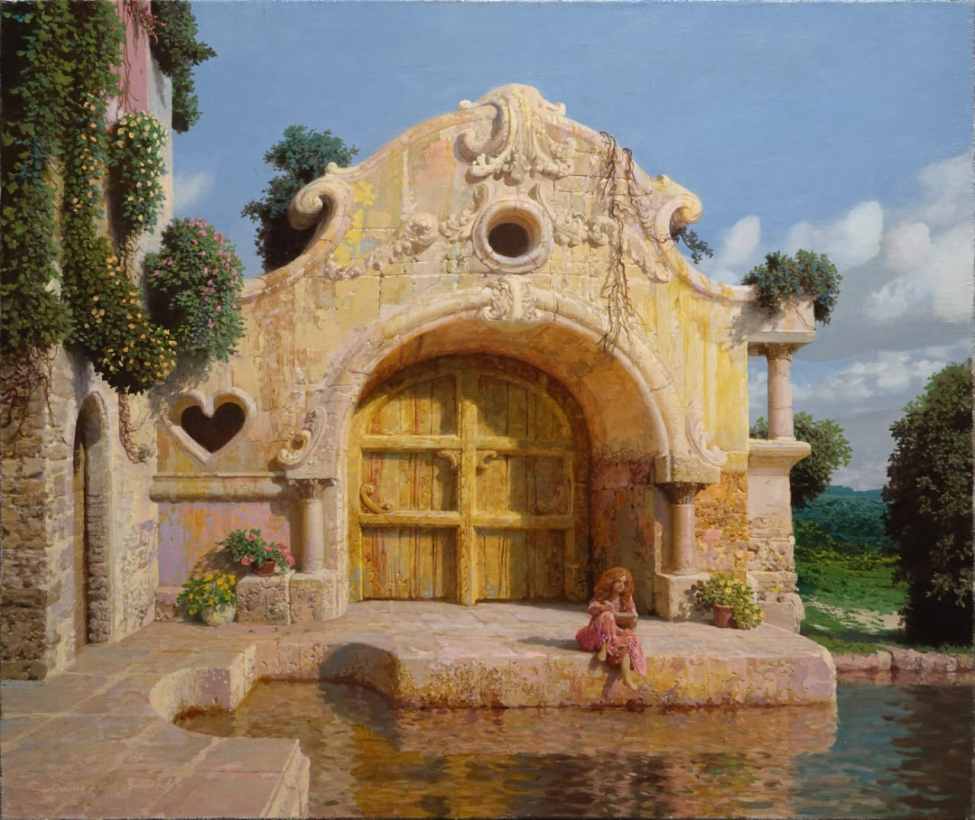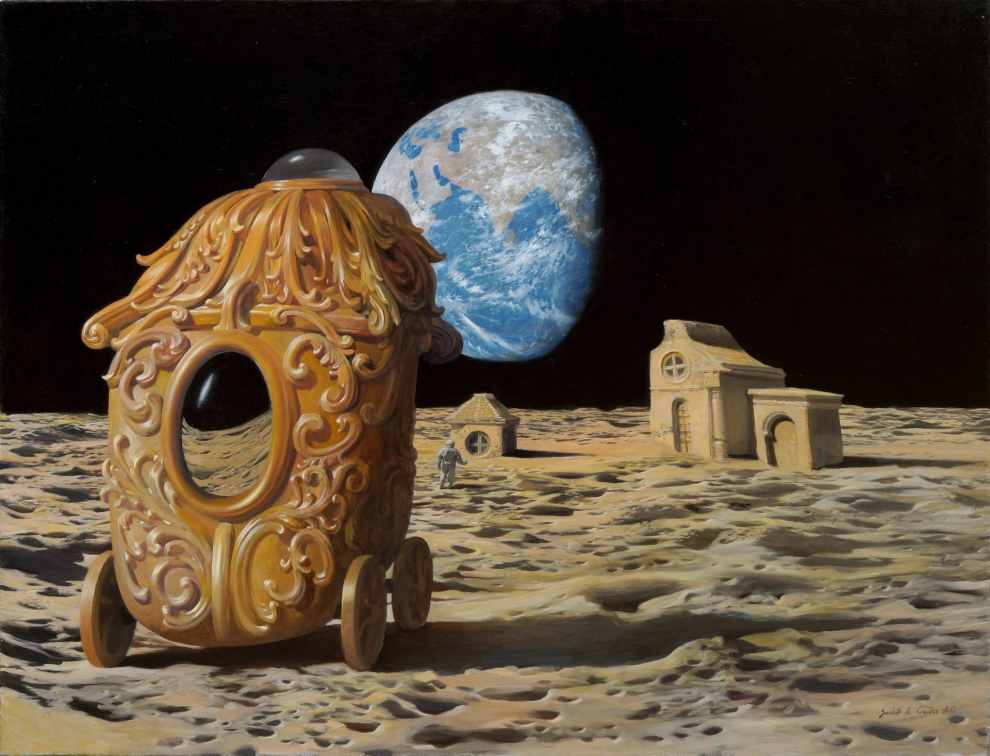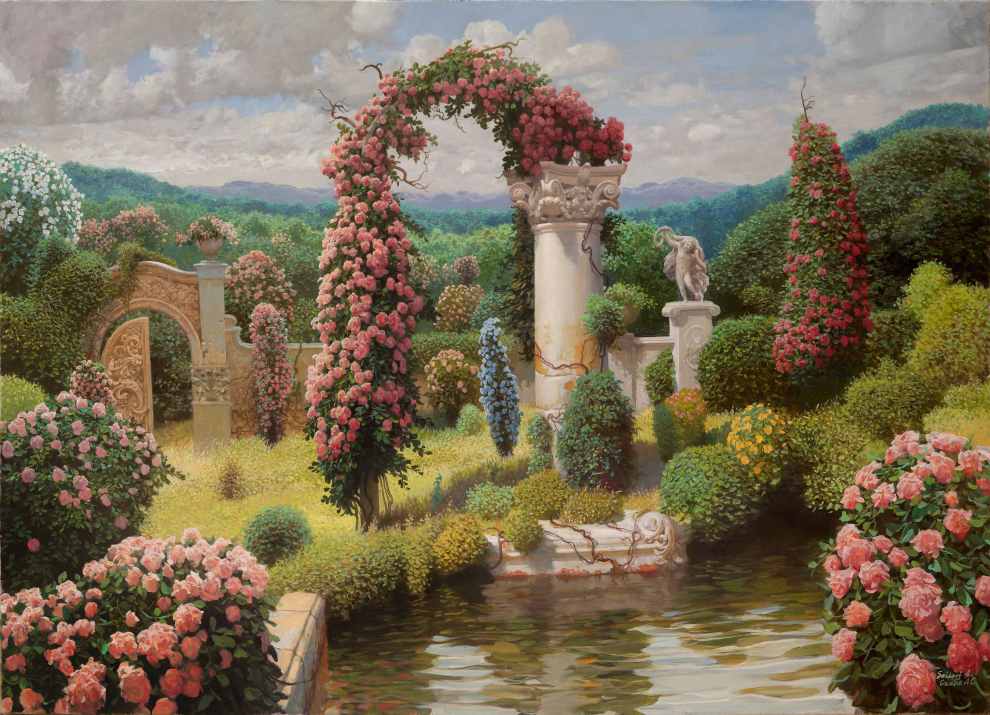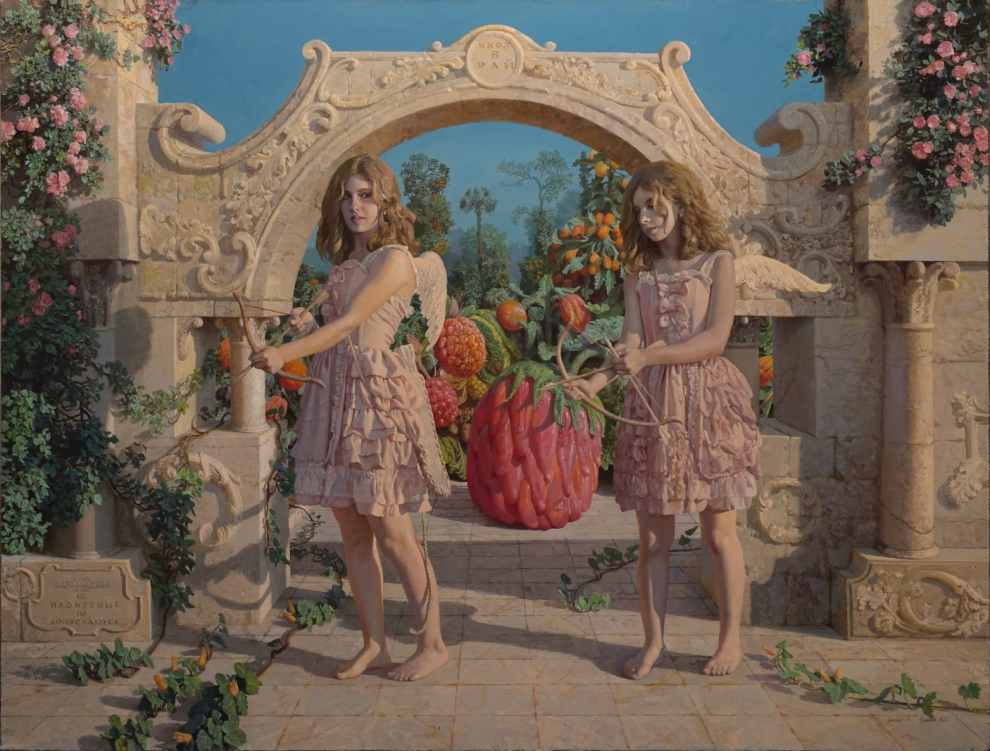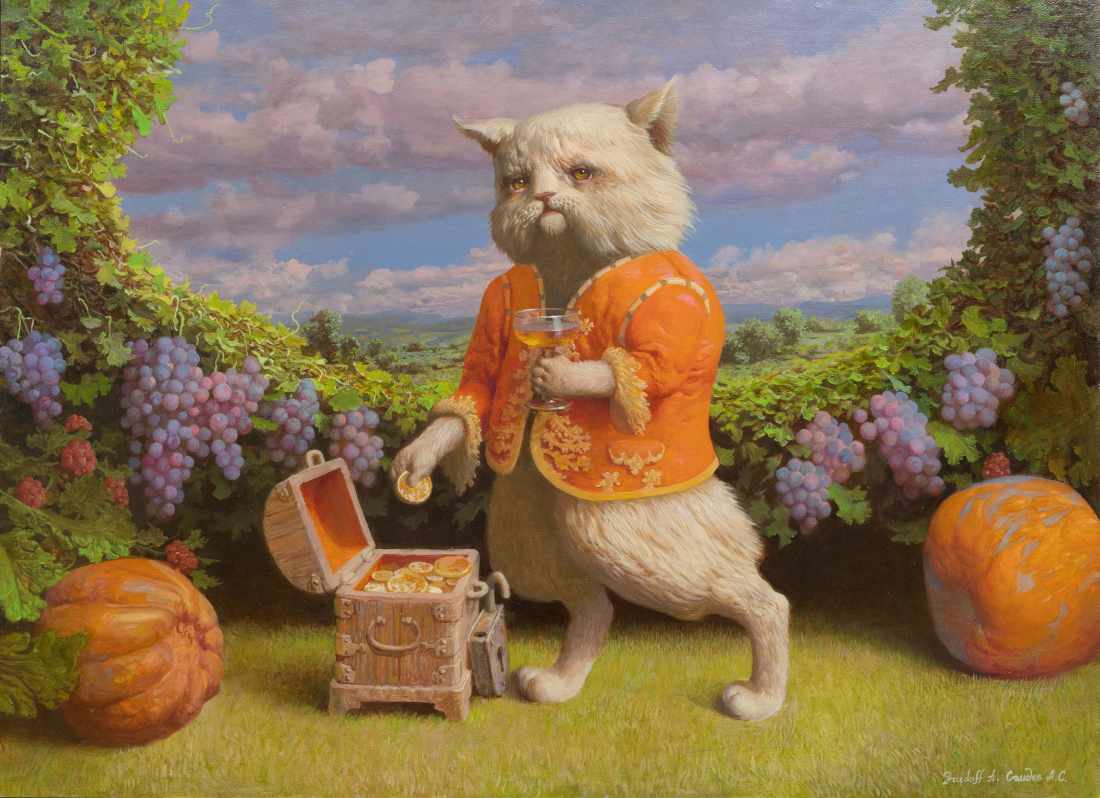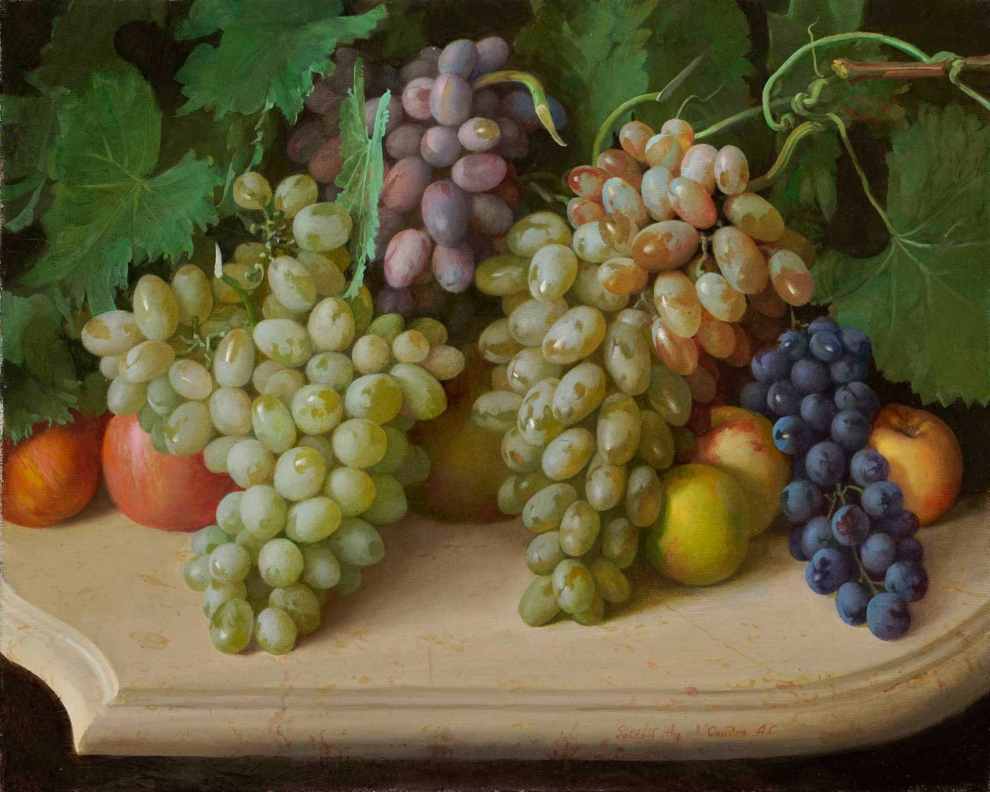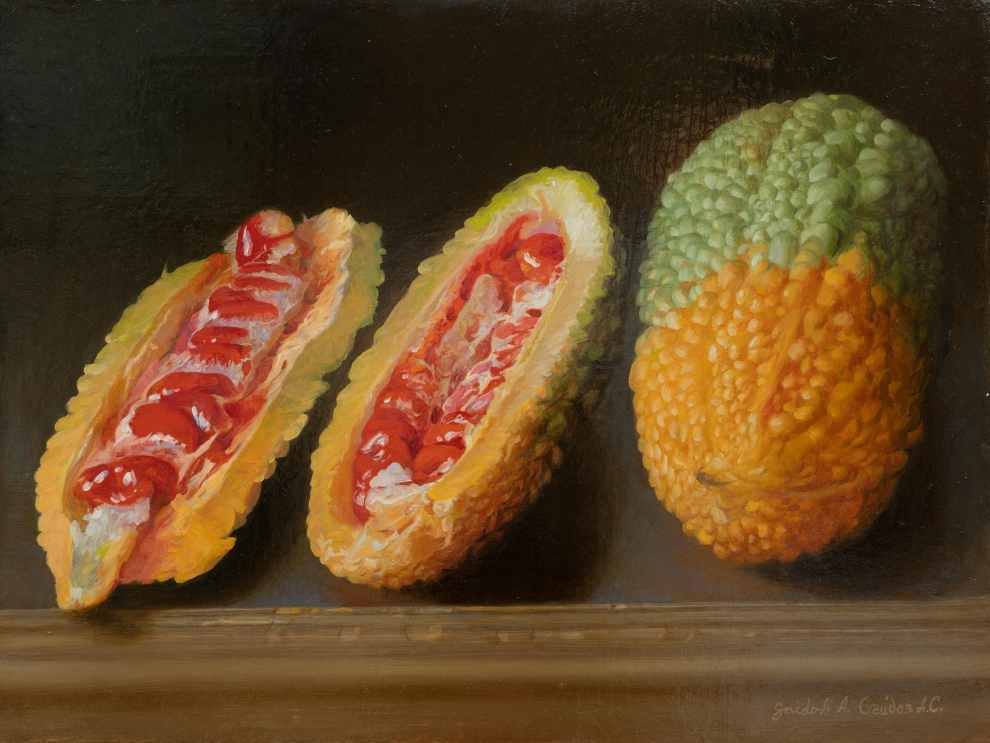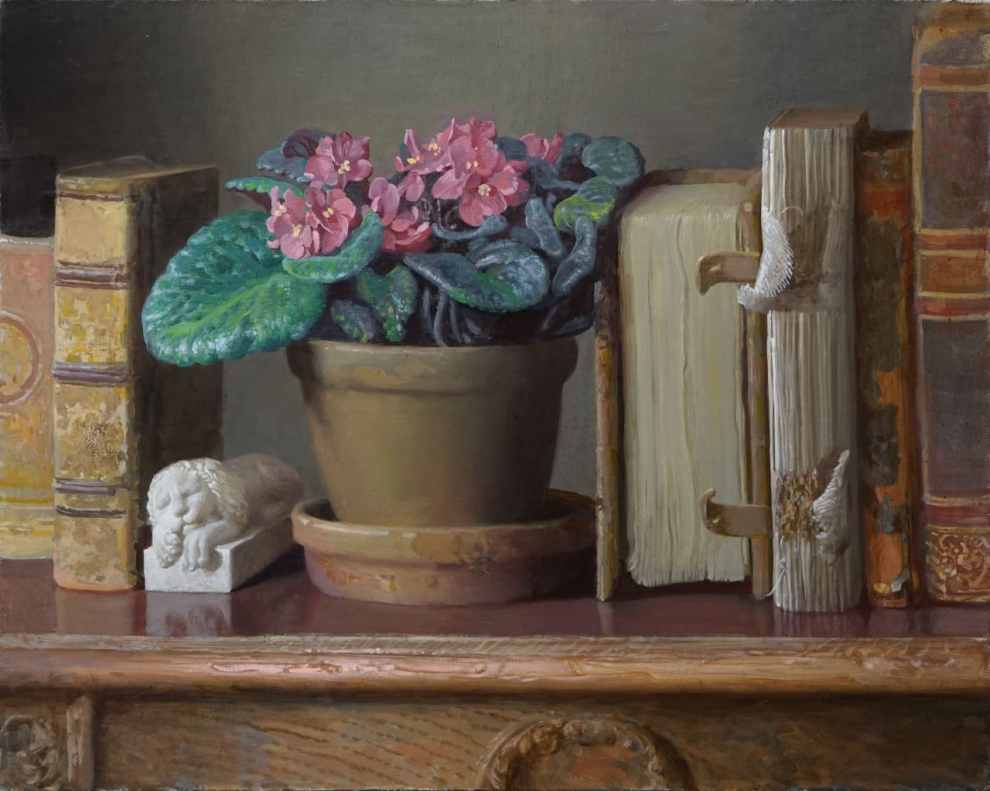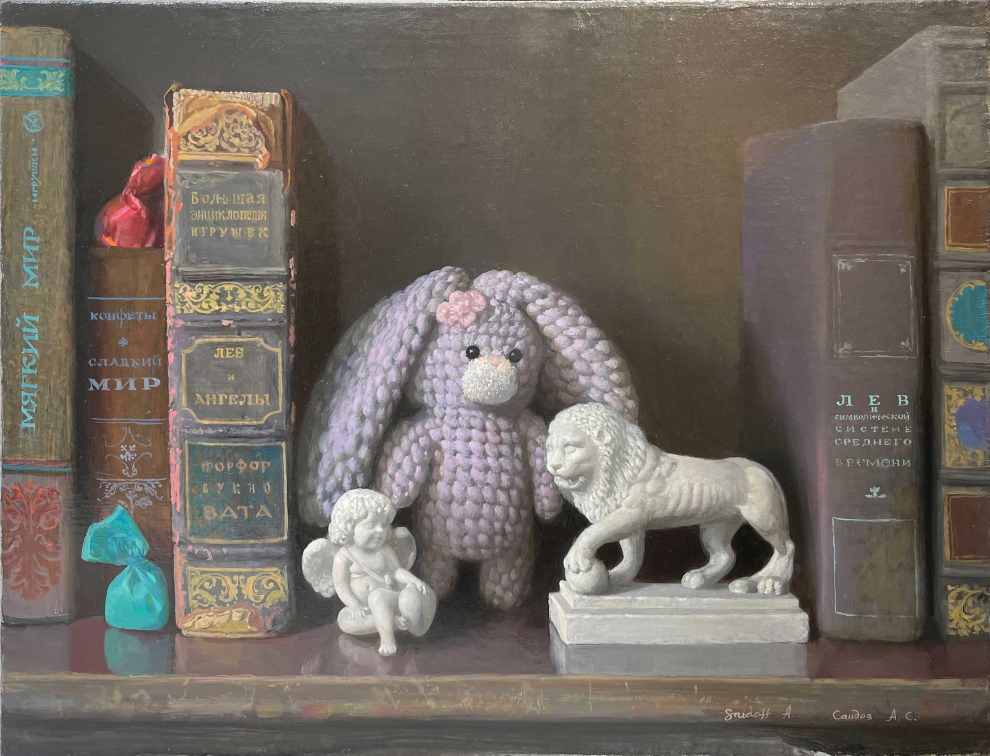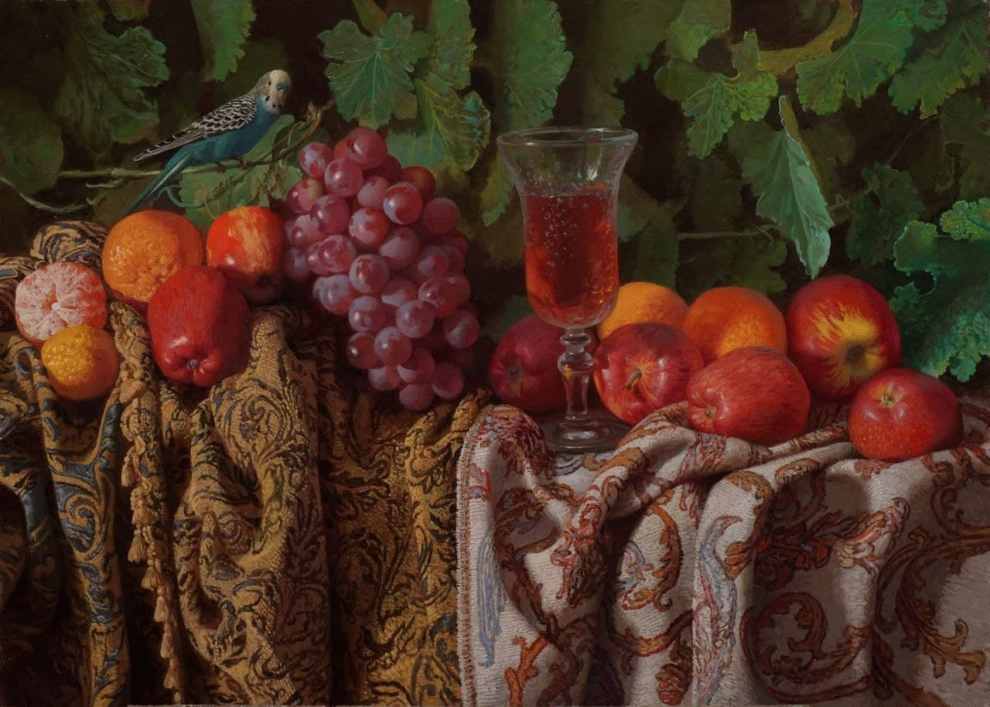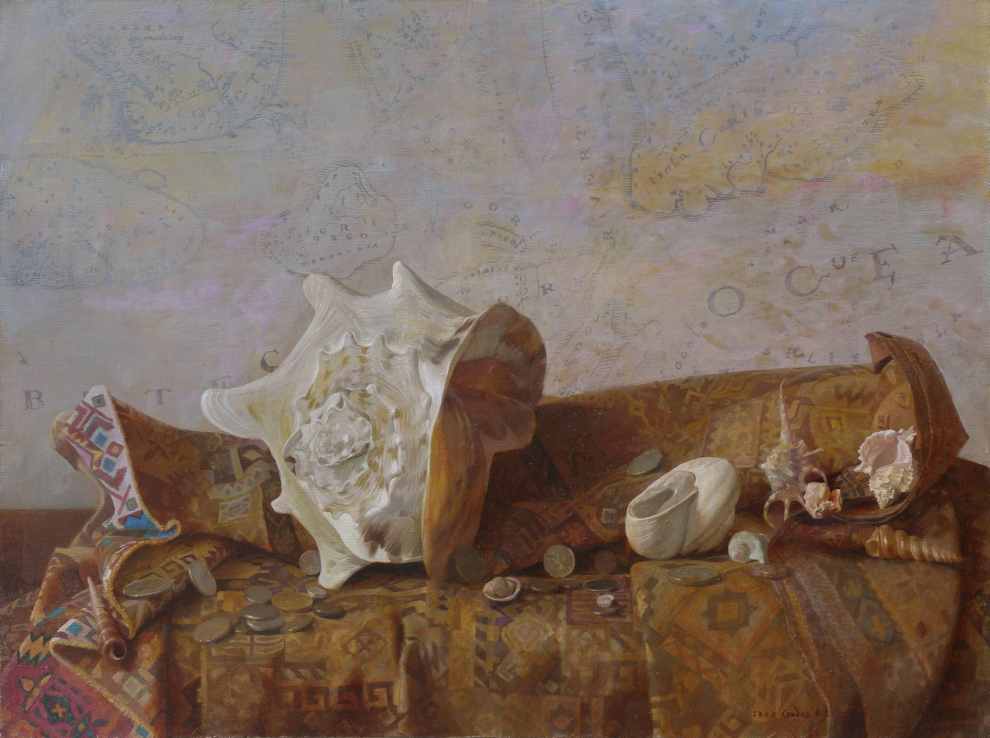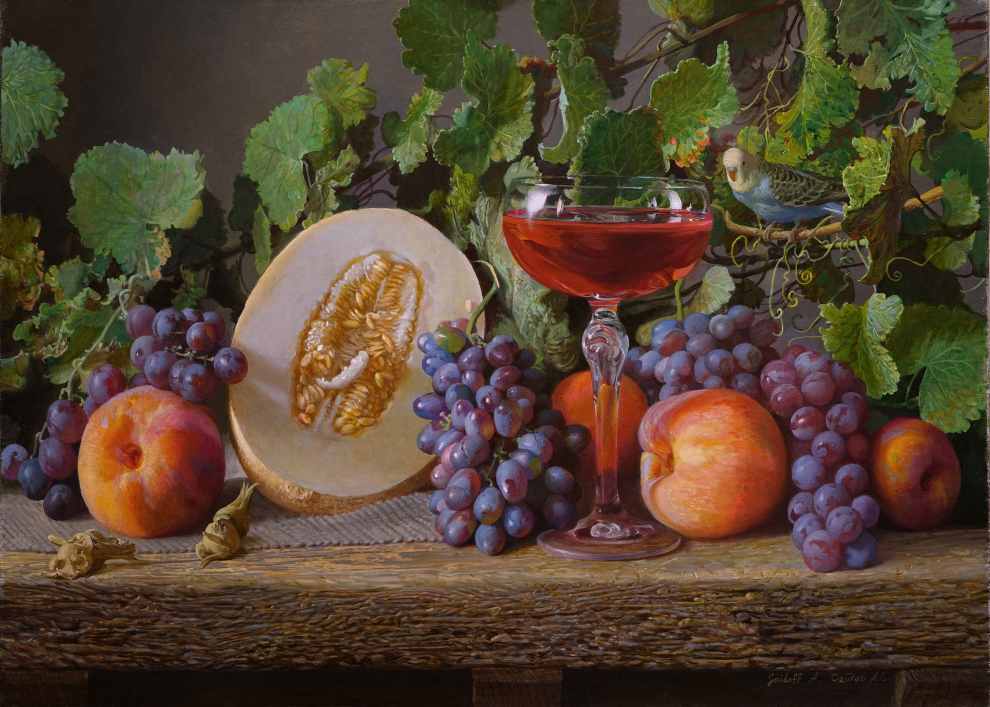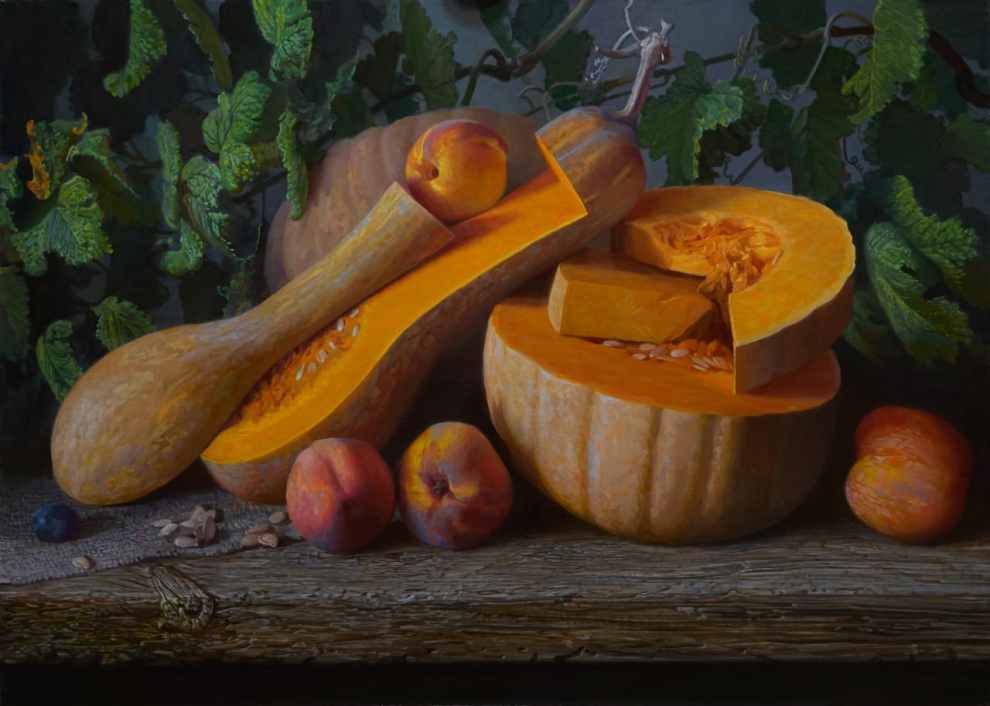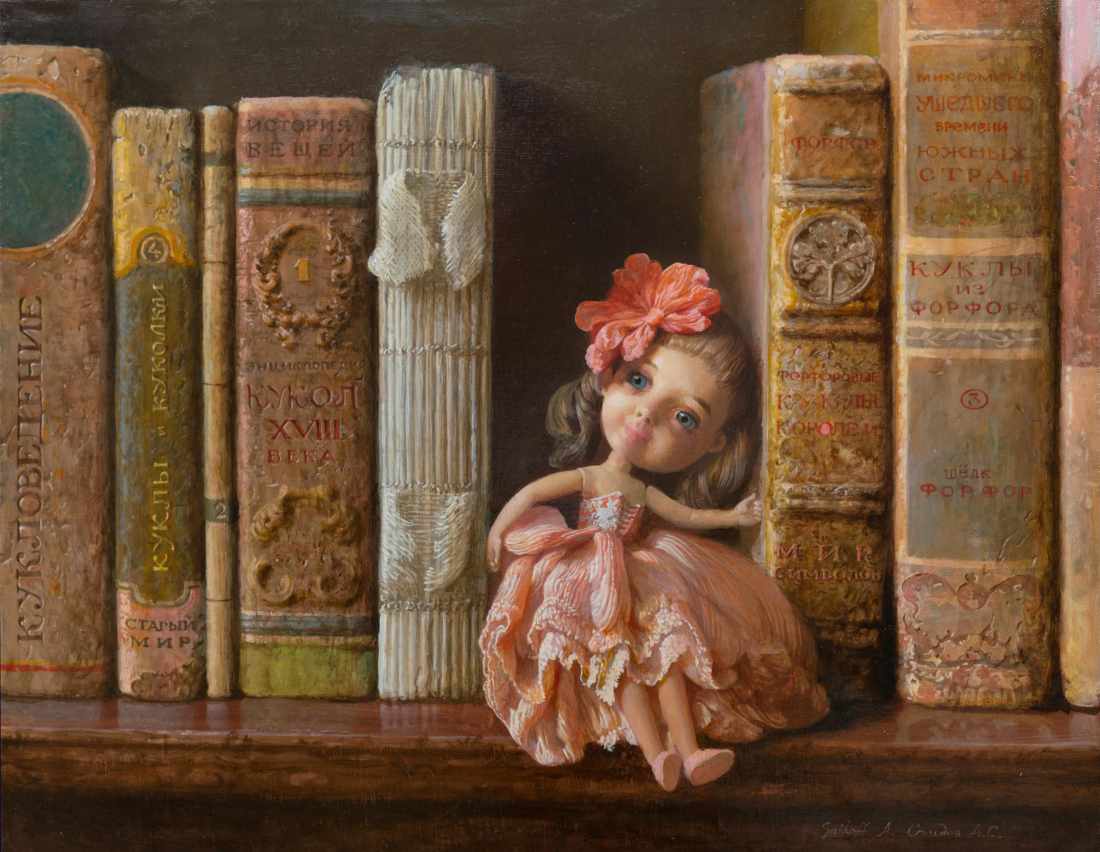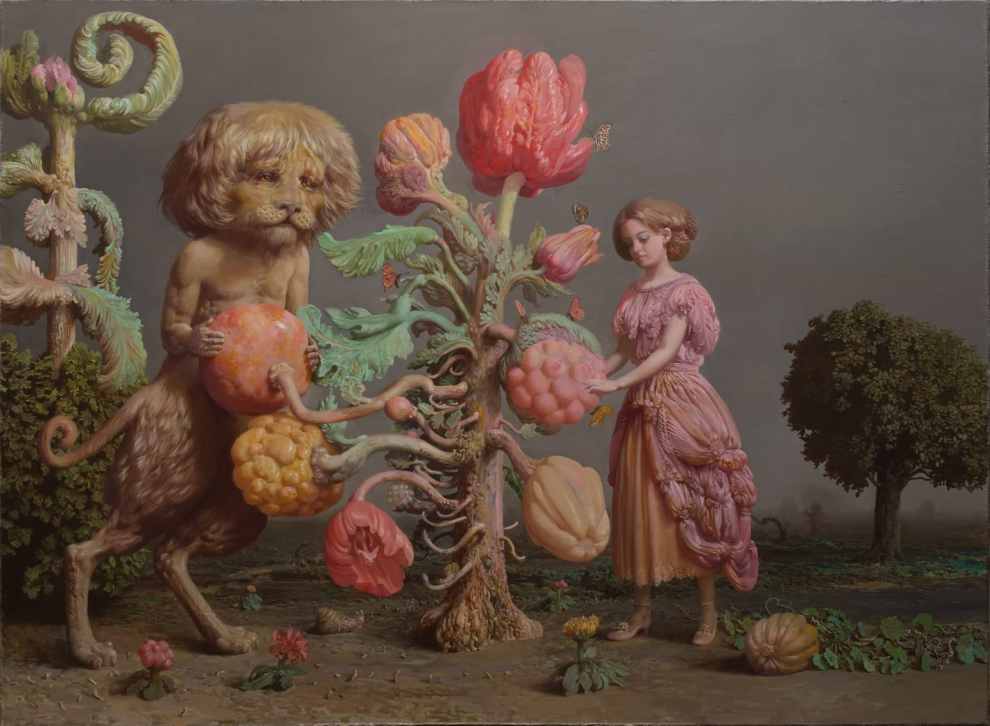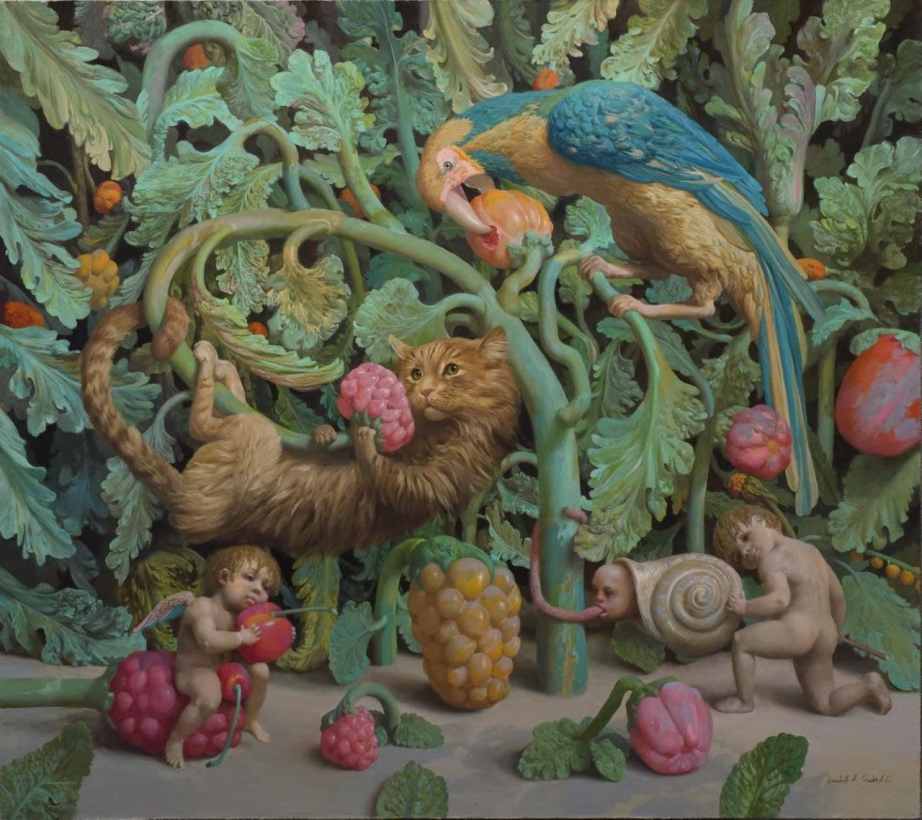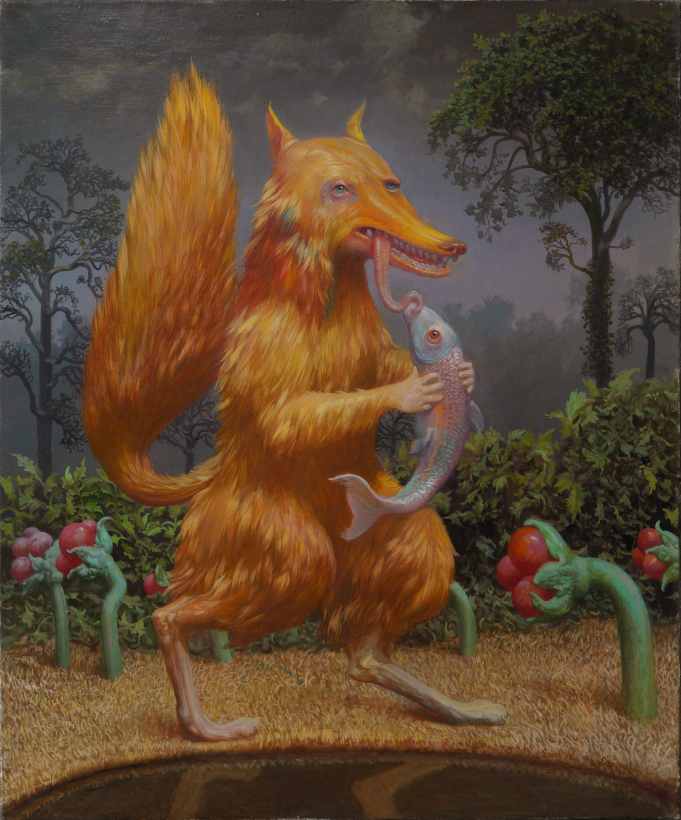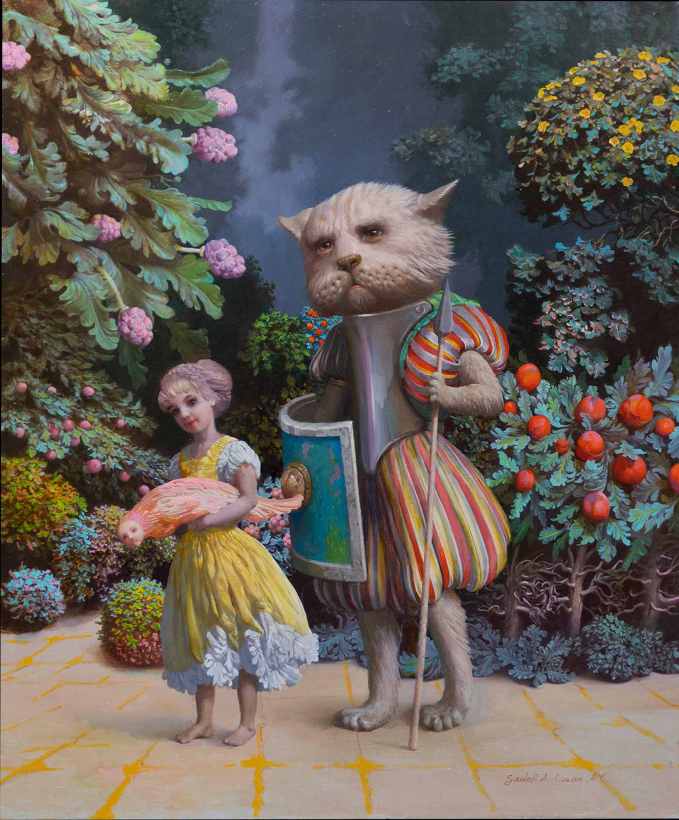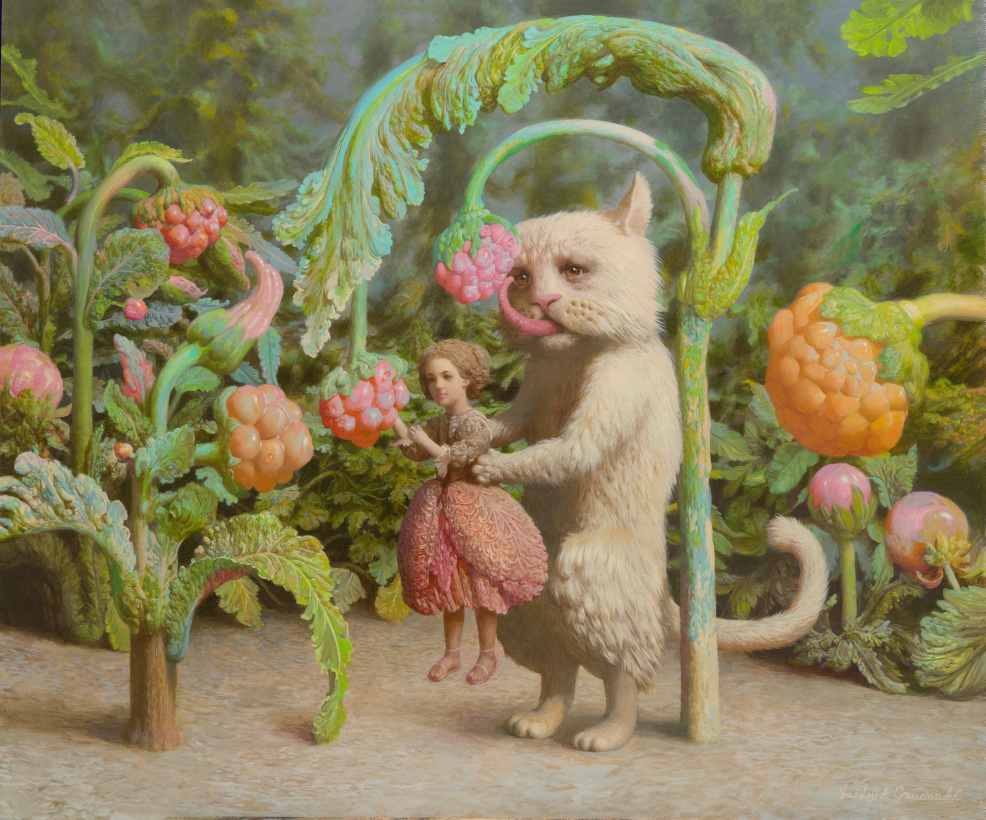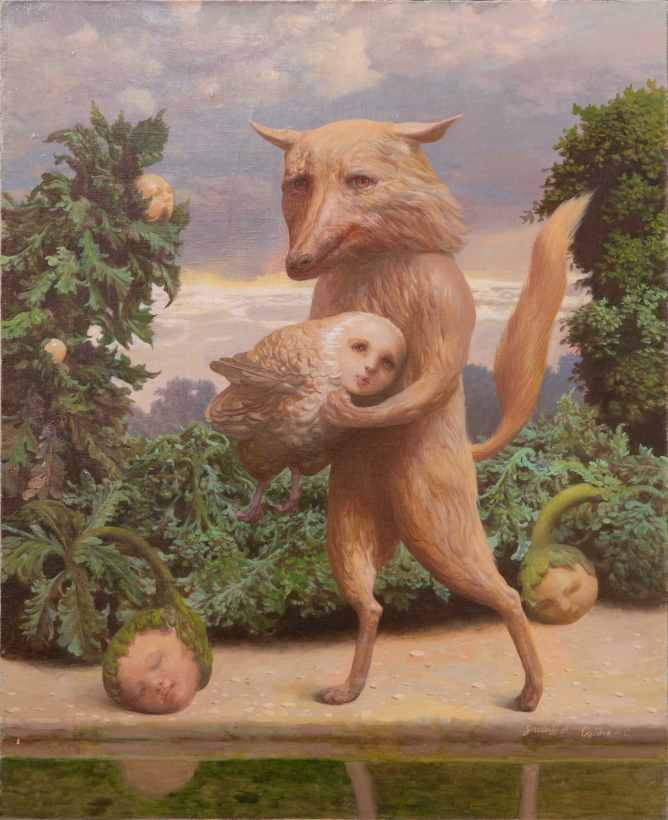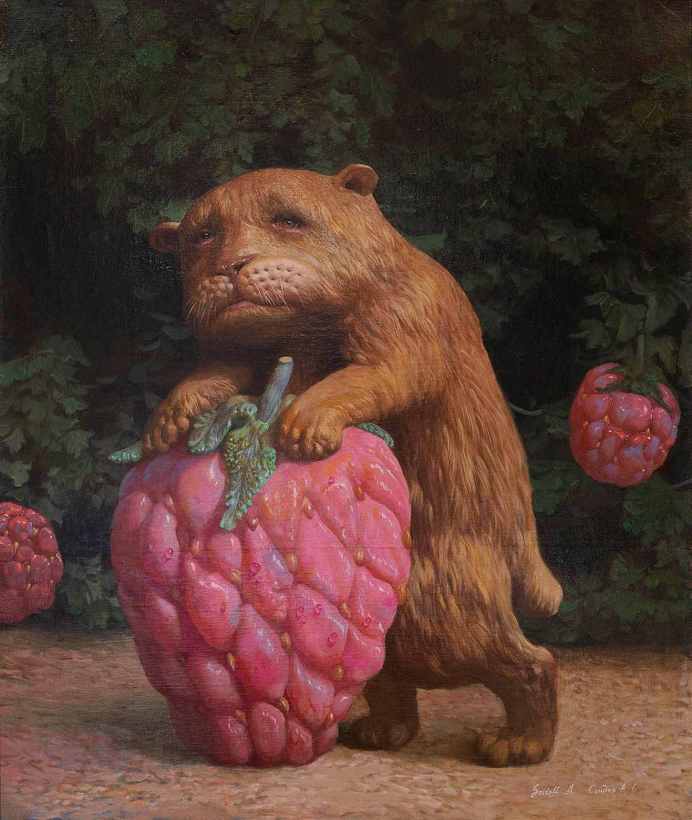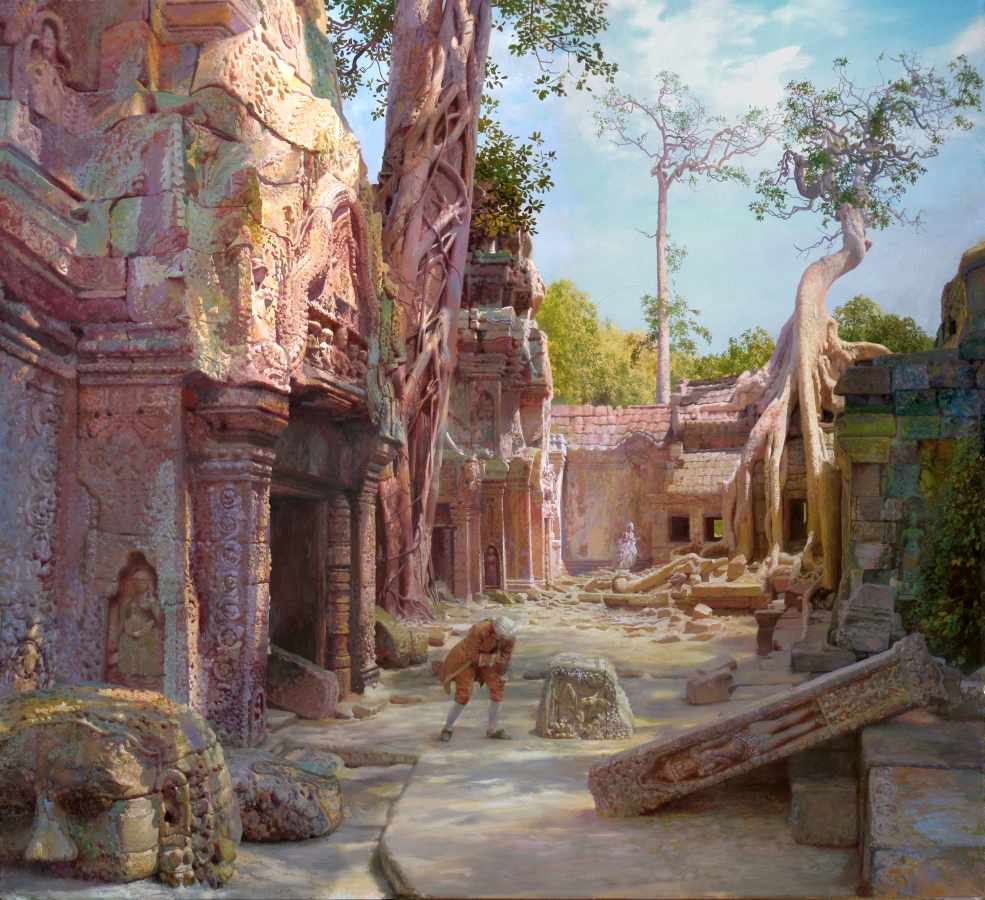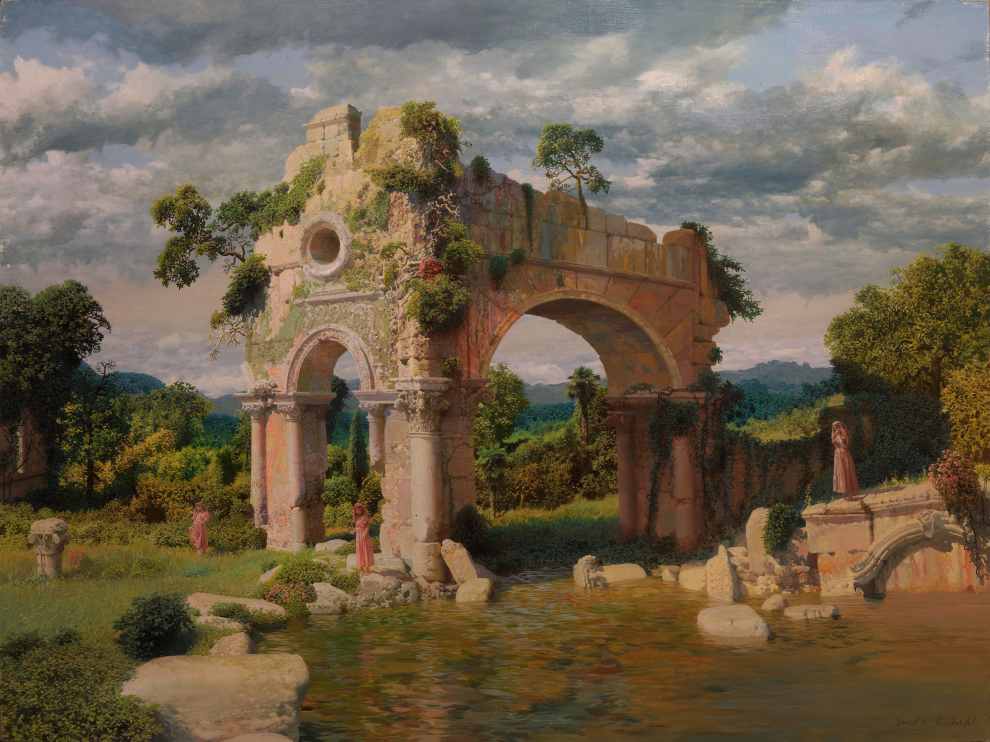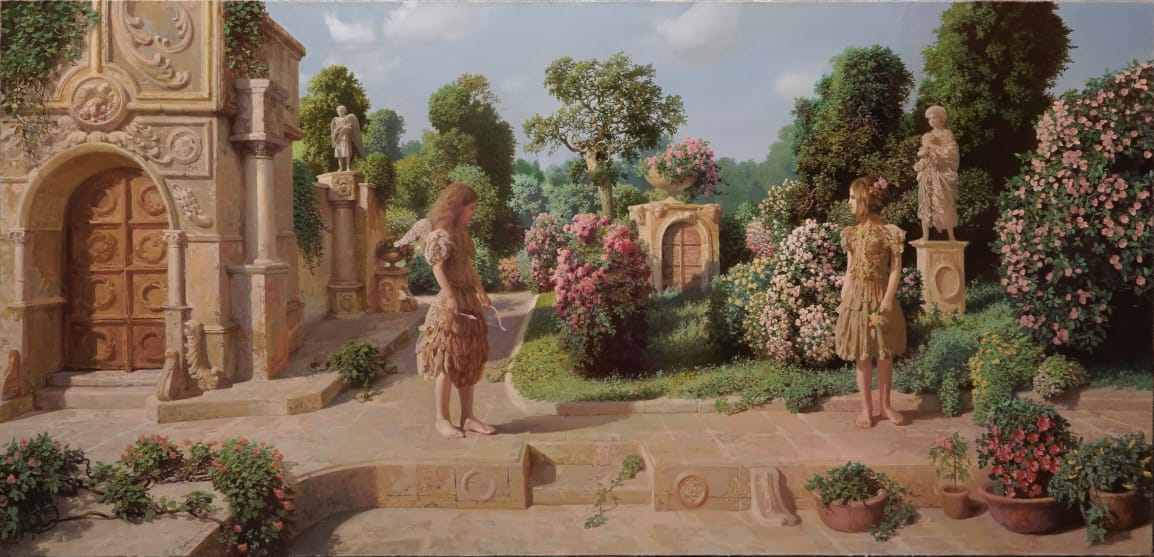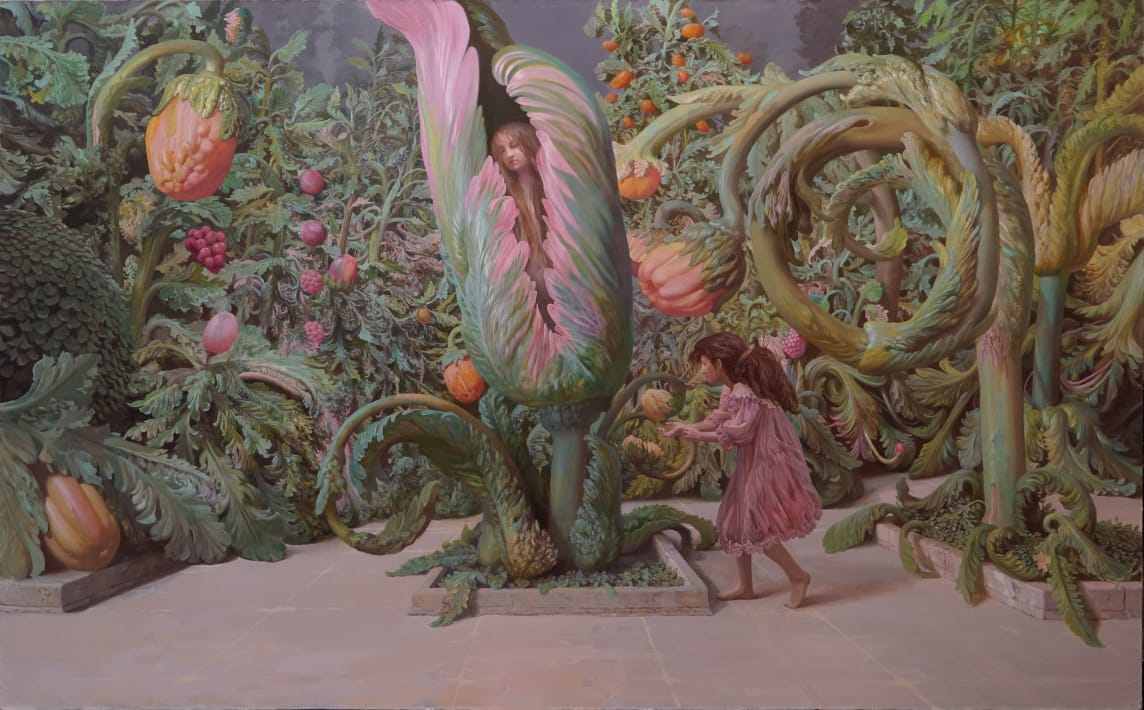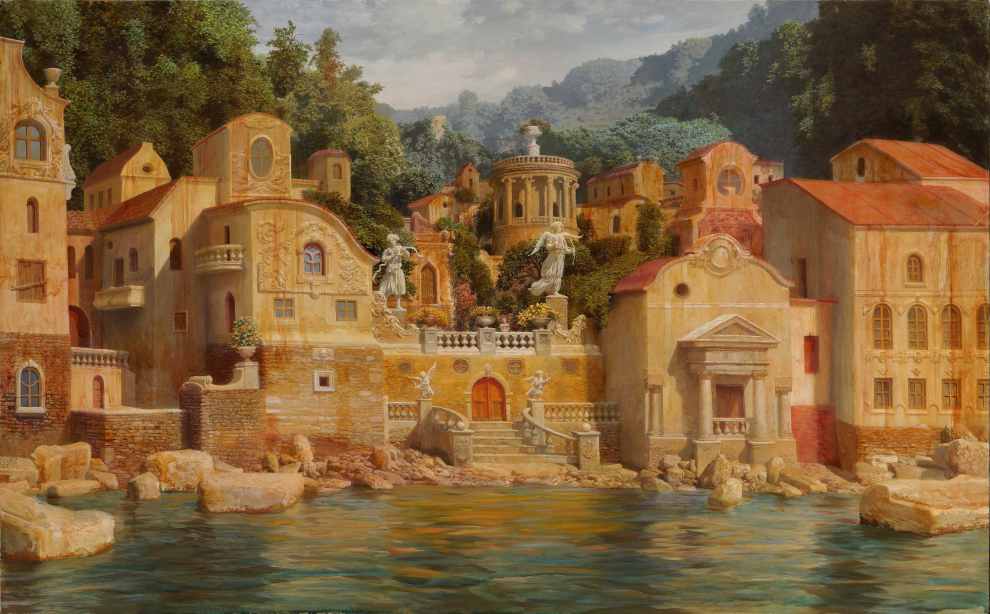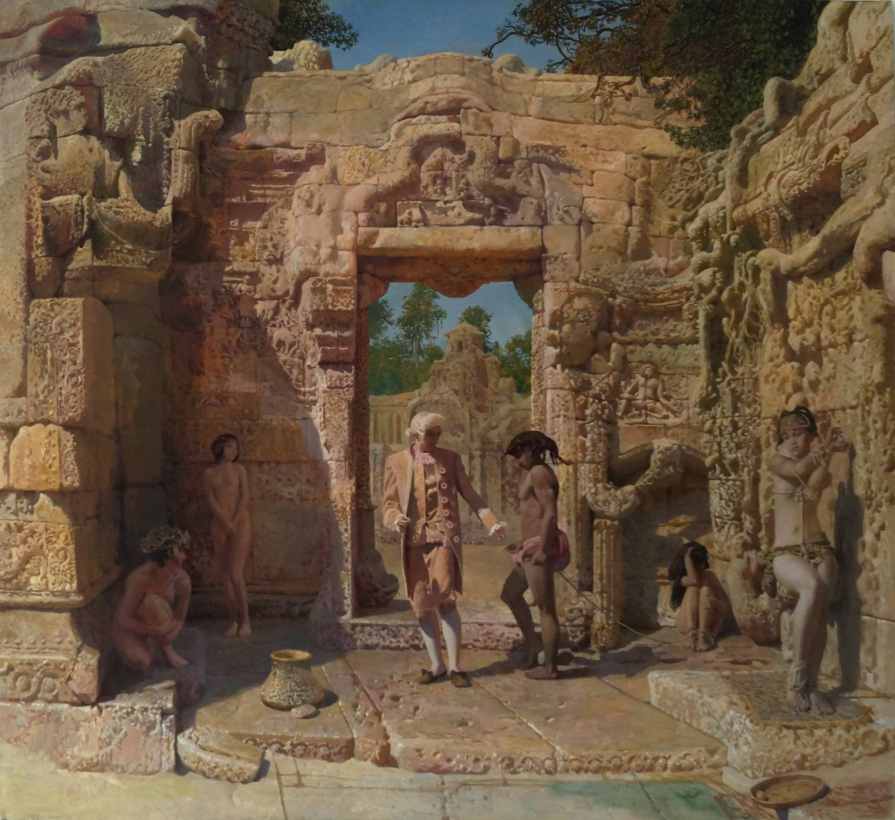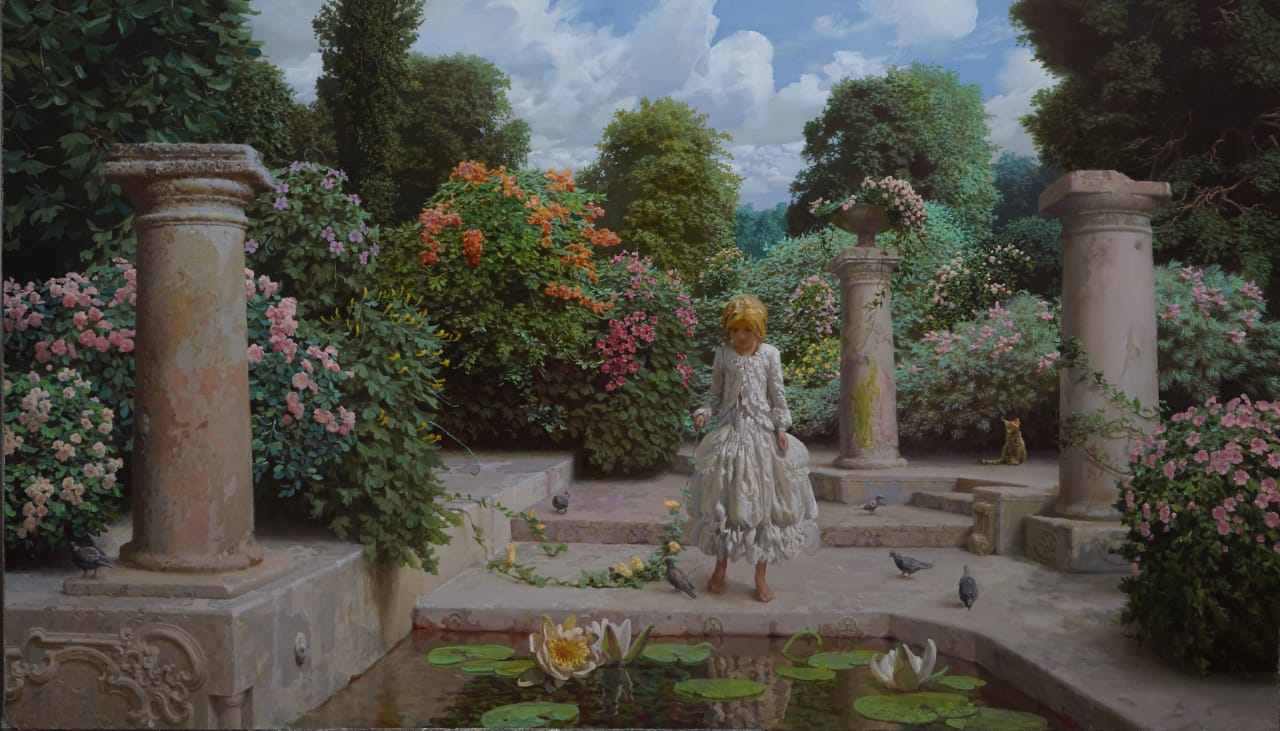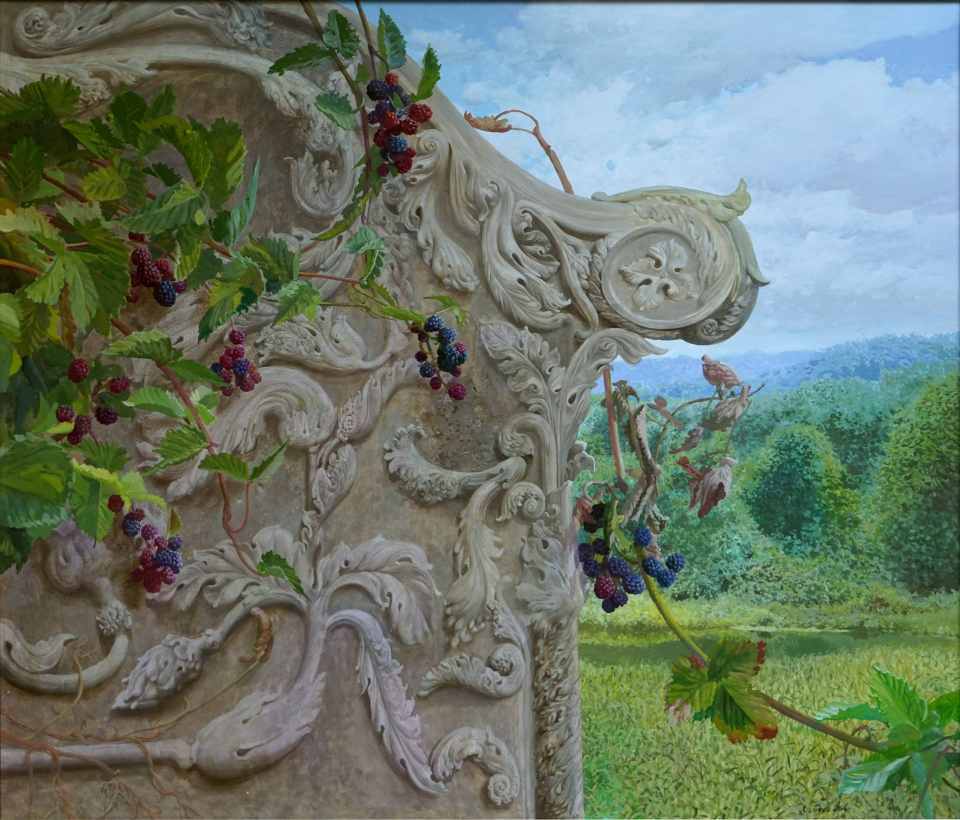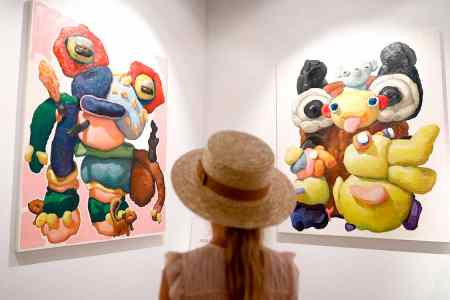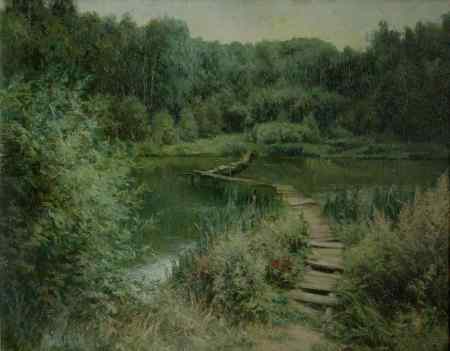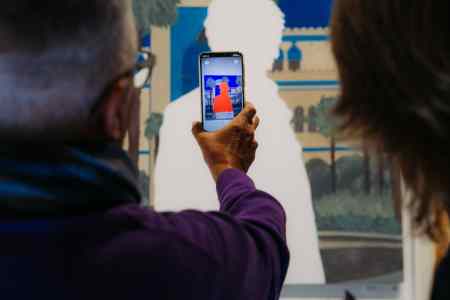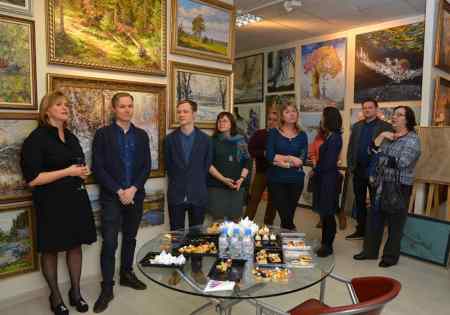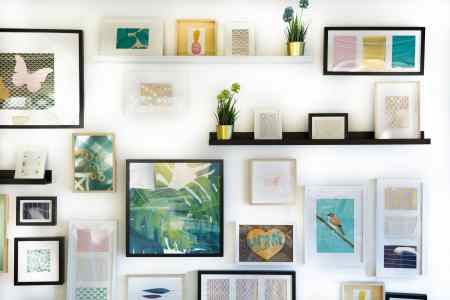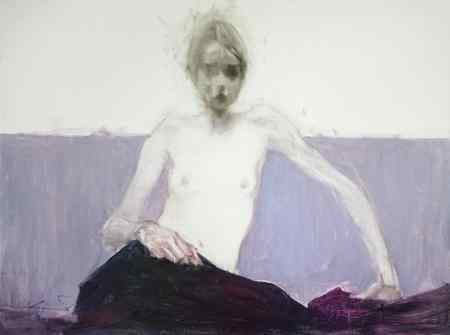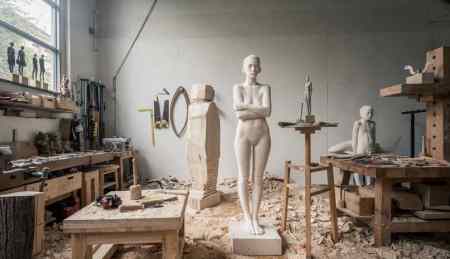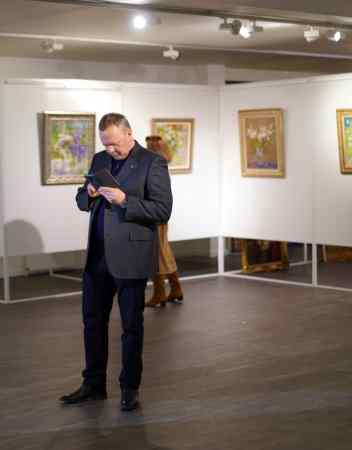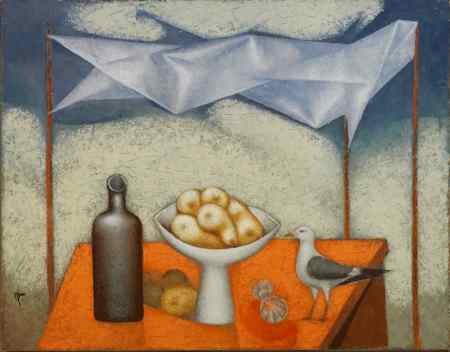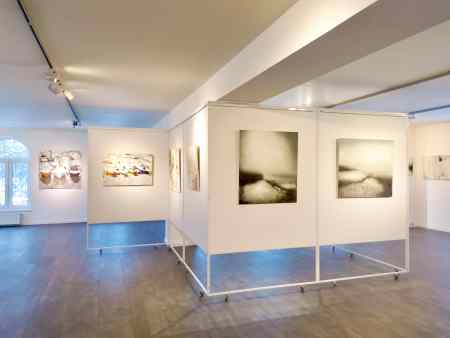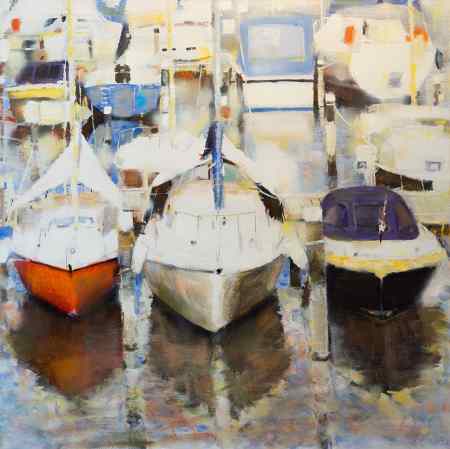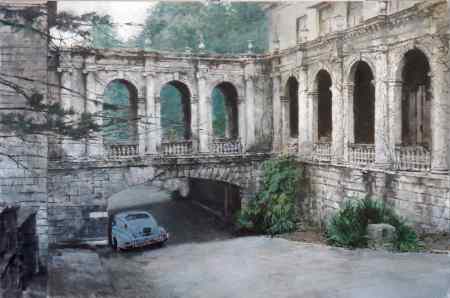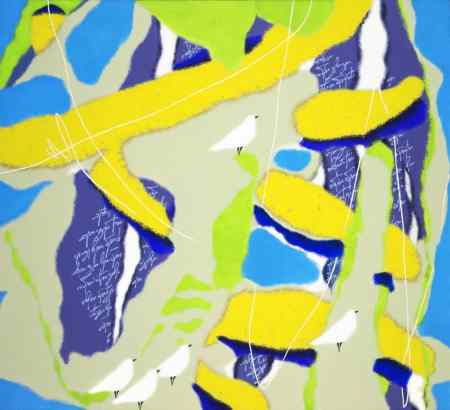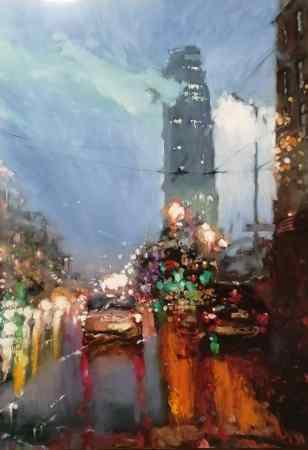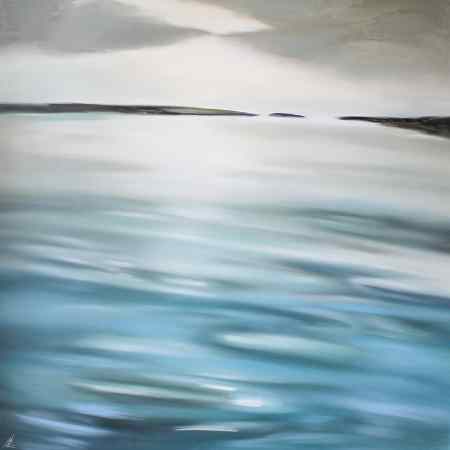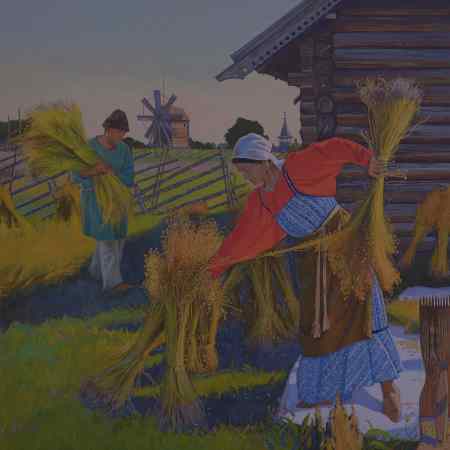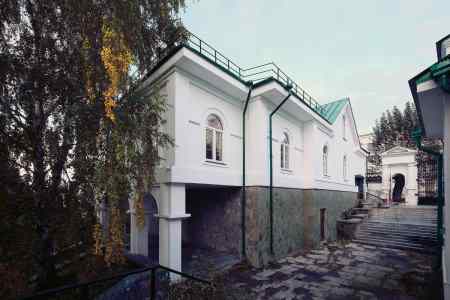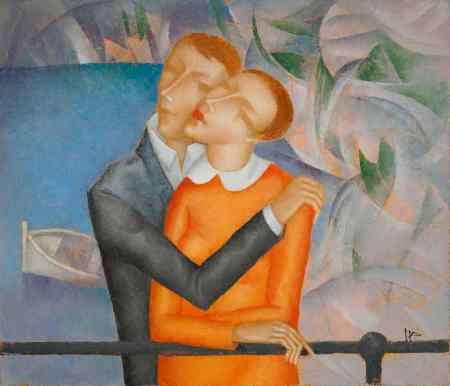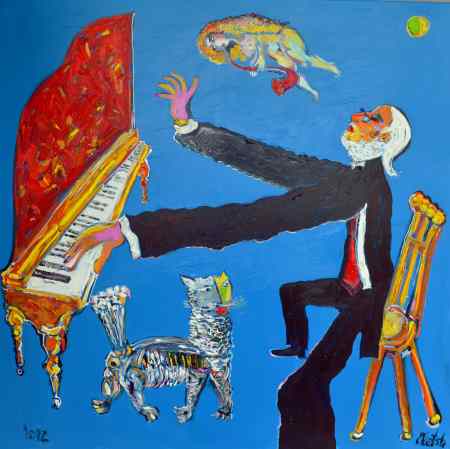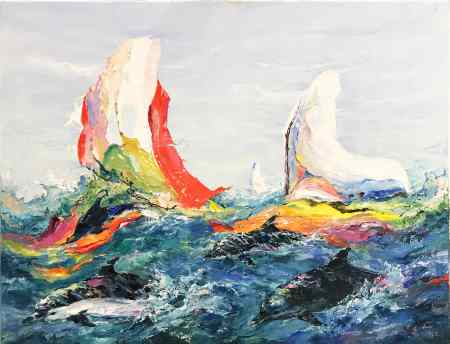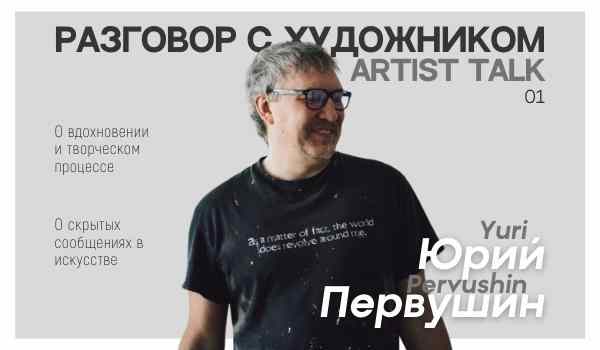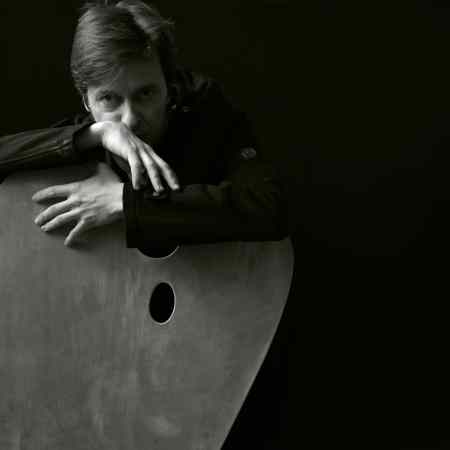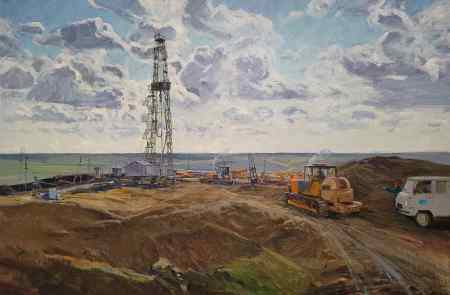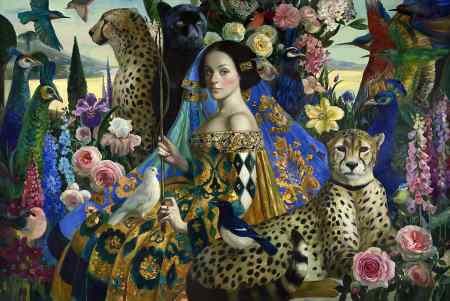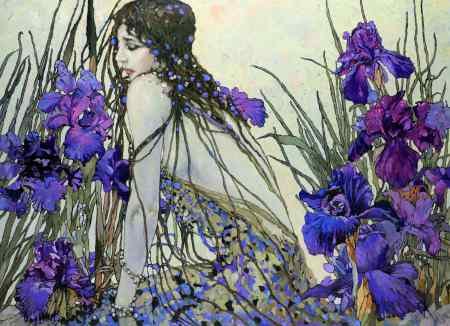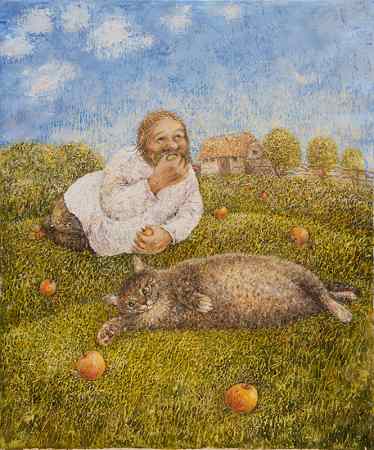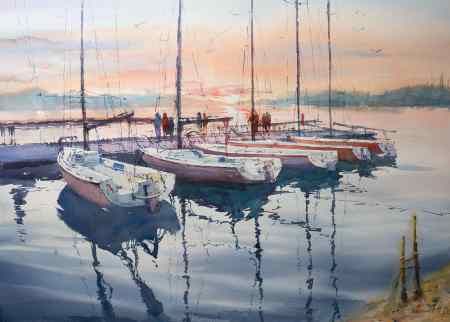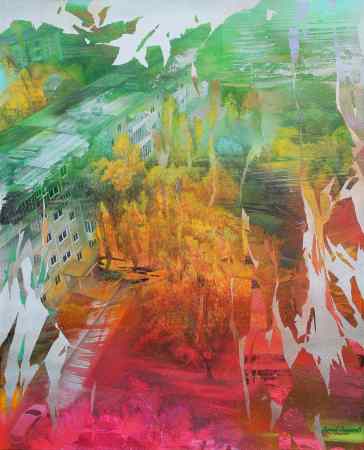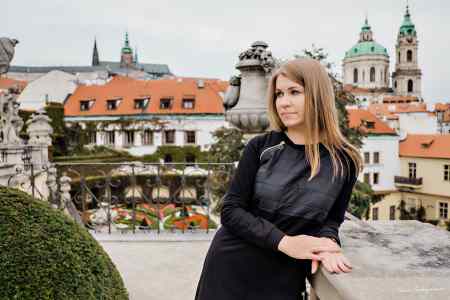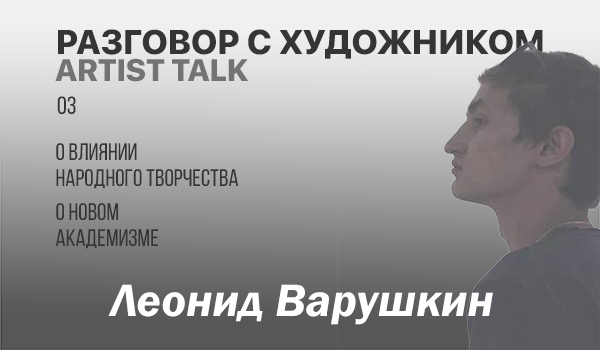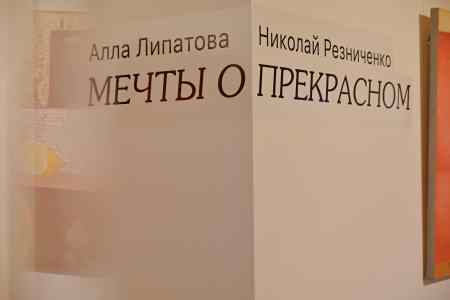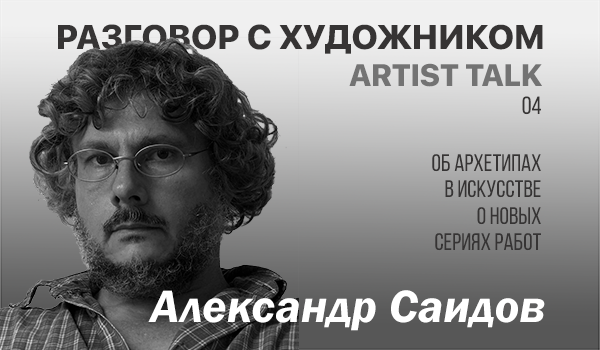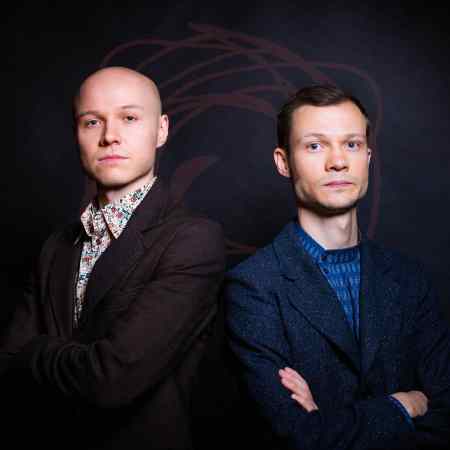During the early period of his work, Alexander Saidov enjoyed the challenges of achieving the highest degree of detalisation and realism in his still lifes. The artist has always been inspired by the Early Italian Renaissance art, Academic Realism of the 19th century, as well as by furniture and decorative arts of the Baroque period. Alexander Saidov’s careful studies of nature and his broad experience in creating detailed realistic still lifes allowed him to progress to the next level of his artistic search: namely, he started depicting fictional objects in realistic manner. The artist has always paid attention to the visual component in his paintings, but in the course of his professional development Alexander Saidov has also started closely analysing the ways in which his paintings influence viewers’ feelings. For example, one of the series of his paintings explores the phenomenon of happiness in life. In some paintings, the elusive feeling of happy well-being echoes nostalgic experiences or inexplicable anxiety about the possibility of losing this harmony.
The compositions in Alexander Saidov's paintings are thought out to the smallest detail and every part of his imaginary world seems real. While painting his pieces, the artist almost becomes a storyteller, who sounds so convincing that viewers start perceiving everything depicted not as a fantasy, but as real world, with its own course of life. In some artworks, fantasy worlds are based on myths, legends, and religious texts, which are familiar to a wide range of viewers. This includes the theme of the Garden of Eden and angels inhabiting it, or the world of cupids armed with arrows. These worlds have existed in our cultural space for thousands of years. However, the artist seeks to present them from a different angle and focuses on a variety oа minor details, which are not mentioned in sacred texts or myths. For example, the artist constructs in his imagination architectural structures in which angels live, and depicts these in his paintings in detail. Moreover, Alexander Saidov’s interests go far beyond the existing worlds, the artist develops his own narratives and fantastic worlds. The world of living heraldry of Alexander Saidov is inhabited by revived heraldic symbols and creatures. According to the artist, all symbols, which are found in his paintings, are stylised images of real objects, animals, plants, in which certain properties are concentrated. For example, the Lion is the symbol of power, the key symbolises a secret... The artist returns heraldic symbols to three-dimensional space and generates new unexpected meanings. Some Alexander Saidov’s paintings reveal tendencies to unification of distinct fantastic worlds, but the artist believes that part of what he has created will forever remain intact.
The artist masterly conveys all the subtle nuances in his paintings, which sometimes may make an impression of excessive complexity and pretentiousness. However, strangely enough, Alexander Saidov looks for inspiration in simple things, or rather in beauty itself. The artist may be inspired by the common objects he likes or photographs, which are pleasing to the eye. Sometimes he finds inspiration in the works of other artists, whose paintings contain hidden meanings and provoke philosophical reflections, which, in turn, Alexander Saidov wants to visualise. Among the artists who inspire Saidov are Hieronymus Bosch and Leonardo, but also Paolo Uccello, Piero della Francesca, Matthias Grünewald, Hans Rudolf Giger and Mark Ryden.
